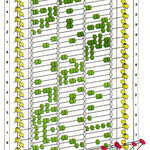Technology

The term “computer” was first used by Sir Thomas Browne in 1646 AD, or 329 BB (Before Bill) according to the Gatesian calendar. Coincidentally (perhaps?), the year zero of the Gatesian calendar, or 1975 AD, corresponds to Daniel Hillis and Brian Silverman’s sophomore years at MIT. And it was during this year the two had the retro idea of constructing a non-electronic computer—specifically, one made of Tinkertoys.
Four years later, after a somewhat disappointing version 1.0, the pair started work on what was to become the Great Tinkertoy Computer, which plays a mean game of tic-tac-toe and is…

Having a bad 2009? It's only going to get worse when those printing presses they use to make more money finally break down. But there is always a bright spot on dark days; babies.
And apparently will brighten the days of other people more than having to see what your baby did today. Plus, even in a bad time, sales of baby related products are up so it's a good time to start a new venture and that's why Babylolly.com now exists, billing itself as a way for parents to share the development of their baby with loved ones, no matter where they live, via an easy-to-use,…

Gamers caught an early glimpse of the future of serious games aimed at the health sector during the PlayMancer project’s demos at the latest Vienna Science Fair. The European PlayMancer project is working hard to improve the technology for serious game engines and tools for 3-D networked gaming.
The platform is being tested and validated physical rehabilitation and behavioral and addictive disorders with the inclusion of innovative multimodal I/O devices.
“We want to build actual games, serious games, around serious health-related problems like bulimia and chronic pain,”…

Scientists at the Sol Goldman Pancreatic Cancer Research Center at the Johns Hopkins Kimmel Cancer Center have used "personalized genome" sequencing on an individual with a hereditary form of pancreatic cancer to locate a mutation in a gene called PALB2 that is responsible for initiating the disease. The discovery marks their first use of a genome scanning system to uncover suspect mutations in normal inherited genes.
The coding error in PALB2, which stands for "partner and co-localizer of BRCA2" causes a shortened version of the protein encoded by this gene, rendering it incapable of working…

Natural wood, with its unique grain patterns, is what gives traditional acoustic instruments warm and distinctive sounds, while the power of modern electronic processing provides an unlimited degree of control to manipulate the characteristics of an instrument's sound. Now, a guitar built by a student at MIT's Media Lab promises to provide the best of both worlds.
The Chameleon Guitar -- so named for its ability to mimic different instruments -- is an electric guitar whose body has a separate central section that is removable. This inserted section, the soundboard, can be switched with one…

The universe is a lazy place. If a system of particles can find a way exist in a lower-energy state, you’d better believe that the system will seek it out. A group of researchers from Amherst and Berkeley are capitalizing on this universal tendency toward calculated sloth by using self-assembly to create denser storage media.
Shaking a bag of Legos until they spontaneously form a TIE Fighter sounds absurd, yet self-assembly creates equally complex products all the time. Adding a little bit of energy to a bunch of small parts often gives them the opportunity to seek out…

A team of Vanderbilt scientists have invented what is basically the world's smallest periscope and are using it to look at cells and other micro-organisms from several sides at once.
The researchers have officially dubbed these devices "mirrored pyramidal wells" and they consist of pyramidal-shaped cavities molded into silicon whose interior surfaces are coated with a reflective layer of gold or platinum. They are microscopic in dimension – about the width of a human hair – and can be made in a range of sizes to view different-sized objects. When a cell is placed in such a well and viewed…

Experts in intellectual property and patents write in a forthcoming issue of the International Journal of Technology Transfer and Commercialisation that tools such as online social networking could be used to eradicate the enormous backlog of patent applications in the US.
Social networking sites such as Facebook, ScientificBlogging and MySpace allow visitors to create networks of friends and contacts, upload images, music, videos, and news stories. Members can discuss, blog, and rate different media on such sites and provide useful feedback to the content creators. Analyzing social networks…

People differ from one another in millions of ways. For starters, there is eye color, hair color, body build, and tendencies toward certain diseases and conditions. We know that genes determine these differences. Now, we also are learning that genes affect how our bodies respond to disease. Through the study of genetic links between patients and chronic diseases, Geisinger Health System researchers are hoping to gain a better understanding of how to prevent, diagnose and treat these diseases.
A new program at Geisinger called MyCode is capitalizing on the health system’s unique ability…

Maybe you just want to wait until you can control television with your thoughts or even have it beamed directly into your brain but if you don't mind interim steps, and won't feel vaguely silly with two hands pointed at a screen, the iPoint 3D may be just what you want next.
The iPoint 3D allows people to communicate with a 3-D display through simple gestures – without touching it and without 3-D glasses or a data glove. What until now has only been seen in science fiction will be presented at CeBIT from March 3-8 by experts from the Fraunhofer Institute for Telecommunications, Heinrich-Hertz…